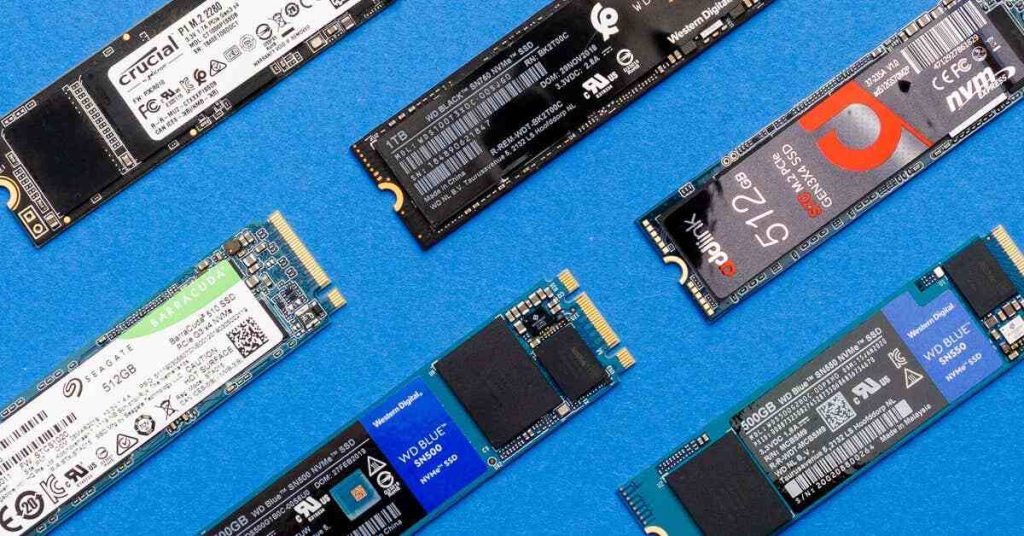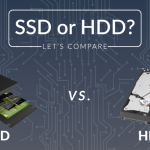Advantages
Speed
This is the biggest reason to go for an SSD; they‟re much, much faster than conventional hard drives in two different ways. First of all, because there are no moving parts there is no wait. While the drive spins up or for a head to move to the correct place to start reading the data there is very little waiting time, or latency. Since data can be read from anywhere in the drive pretty much instantly, tasks which rely on lots of data being read from all over the place (such as loading the operating system when you start your computer, starting an application or loading a game) are completed much, much faster. How much faster?
Well, when comparing identical machines running identical installations, it‟s not uncommon for the computer with an SSD to start up in less than half the time of the computer with a conventional magnetic drive. This has the added benefit that you never have to defragment your files, which is always a nice perk.
As well as outperforming HDDs in random reads, SSDs also have the upper hand in sustained reading and writing (which is when you‟re reading and writing large files like videos, for example). A typical new magnetic hard drive will be able to read at 60-80 MB/s, whereas a midrange solid-state drive will be able to read at anywhere from 175-250 MB/s.
Durability
The other major advantage that SSDs have is again due to their lack of moving parts. When nothing moves there‟s very little that can physically go wrong with the drive, making it virtually invulnerable to vibrations, magnetism or being dropped – things that would seriously damage a magnetic drive.
This makes SSDs perfect for laptops and other smaller portable devices that get moved around a lot.
Noise
Yet another benefit of having no moving parts is the SSD‟s silence. Hard drives make a surprising amount of noise, especially when they‟re flat out. Having a drive that completely outperforms a conventional hard drive while making no noise at all is a definite plus.
Power Consumption
One of the big things that defines a laptop is its battery life – what‟s the point of a portable computer if the battery only lasts an hour from being fully charged?
Luckily, most solid-state drives draw a third to a half less power than even “low power” hard drives. This puts less strain on your battery, allowing it to last longer.
Temperature
If you‟ve ever been poking around inside a computer while it‟s switched on you‟ll have probably discovered that hard drives get hot when they‟re in use for long periods of time. Really hot. Rotating platters 7200 times a minute isn‟t exactly the best way to keep a motor cool, and that heat has to go somewhere!
Furthermore, hard drives (like other components) need to be kept cool – extended periods of high temperatures reduce its reliability and lifespan. That means extra fans, which means extra noise (see above).
SSDs, on the other hand, generate very little heat and require no cooling. What‟s not to like?
Disadvantages
Price
What‟s not to like? Well, unfortunately SSDs are still very much a developing market, so you still pay a massive premium for all those advantages.
As of January 2011, you‟ll pay about £0.03 ($0.05) per GB for a large-capacity hard drive, whereas even the cheapest 128GB SSD will set you back £1.40 ($2.20) per GB. Yes, they do aim to do different jobs, but it just goes to show that it‟ll be a while before SSDs are ready to fully replace HDDs.
Reliability/Longevity
The other major problem SSDs have is with longevity. As fast as the technology allows solid-state drives to be, it limits them in that each transistor may only be written to a certain number of times before it becomes “stuck” and cannot be written to any more. While the SSD‟s controller helps to handle this by distributing writing between the transistors with wear levelling, eventually the drive will start to become very unreliable very quickly.
This is the solid-state drive‟s main Achilles heel, especially as the platters on magnetic hard drives don‟t have this limit. While a HDD will eventually fail and become unusable, this is usually due to the motor or the read/write head wearing out while the platters containing the data remain intact.
Although this sounds scary it should be made clear that the theoretical lifespan of the transistors in a solid-state drive is around 50 years. Even if this is only theoretical, most SSDs should last 3-4 years, after which you‟ll probably be looking for an upgrade anyway.


